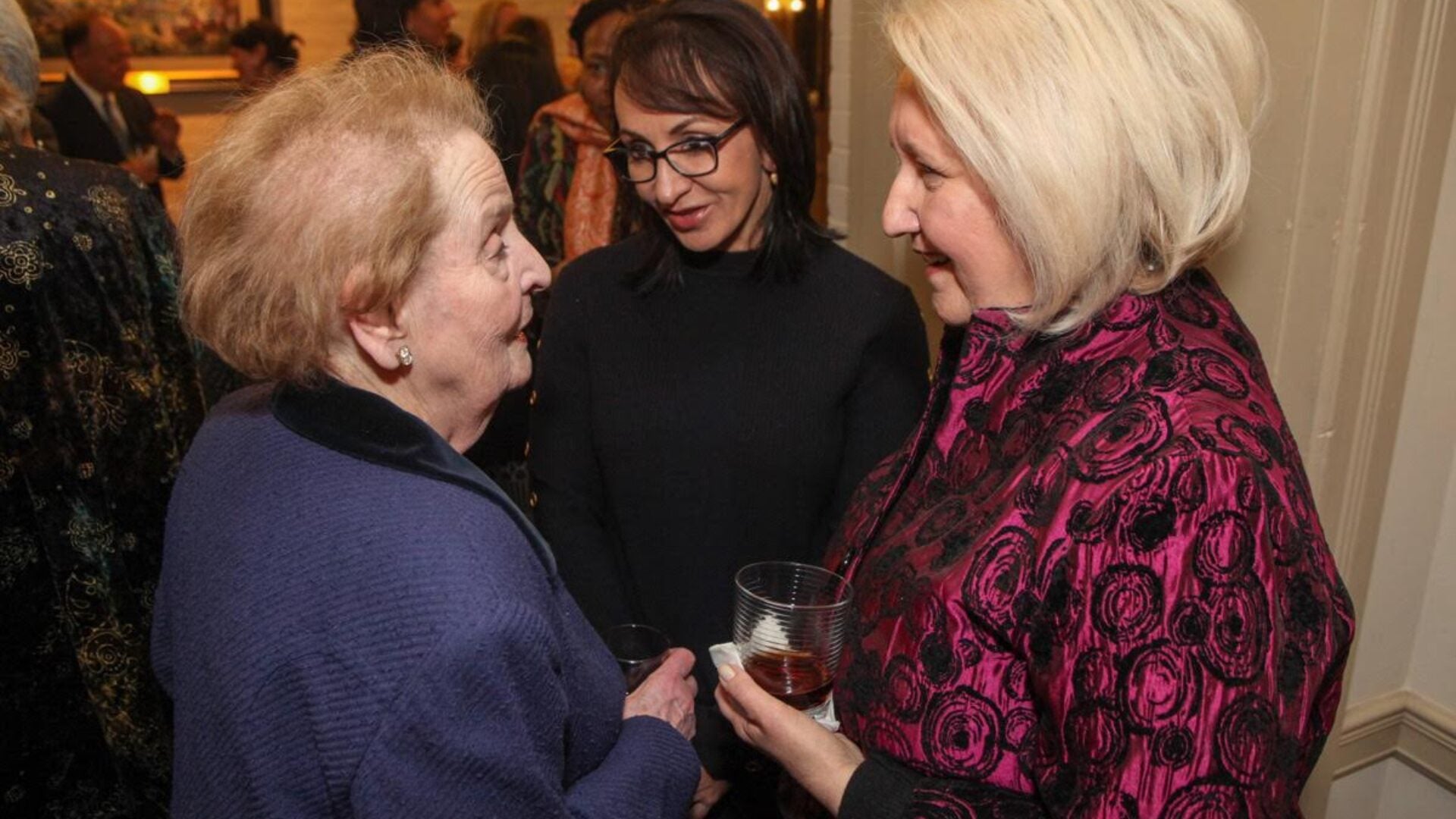Pandemics in Crisis-Affected Settings: Ensuring Women & Girls Are Not Forgotten

This post is published in collaboration with George Washington University’s Global Women’s Institute.
Healthcare workers exercising ‘wartime triage’. Bare store shelves and the shuttering of businesses. Movement restrictions. For those of us living in the United States and other wealthy countries, the COVID-19 pandemic has brought to bear a series of social and economic shocks our governments—and many of us—are struggling to manage. Yet for many of the 71 million people living as refugees, asylum seekers, or ‘internally displaced’ within their own countries, these conditions are not new. The impact of the COVID-19 pandemic in already-fragile settings such as Syria, Afghanistan or South Sudan is potentially devastating. Responding requires informed, as well as inclusive, action.
How can we learn from past infectious disease outbreaks in conflict and disaster-affected settings? And how can we ensure, unlike past outbreaks, women and girls are not lost in the response?
While not rising to the level of a pandemic, cholera outbreaks in Yemen, Syria, and Haiti, along with Ebola in Sierra Leone, Liberia, Guinea, and DR Congo, brought numerous direct and knock-on effects. Health systems already weakened by crisis—or even under deliberate attack—were further strained; increased need for clean water and sanitation outstripped supply in environmentally-precarious areas; loss of livelihoods placed further pressure on weakened markets and food-insecure households; and aid was sometimes re-directed to ‘more urgent’ needs. The scale of the current pandemic has already led to border closures and changed migration policies that have significantly affected resettlement processes as well as safe passage for people seeking asylum or migrating for economic or climate reasons.
Recognizing the possible impact of Covid-19 on the world’s most vulnerable—people forced to flee war or still living in it, who lack access to soap and water, or to a hospital bed should they fall critically ill—the United Nations just launched a $2 billion global humanitarian response plan. “If we leave coronavirus to spread freely in these places, we would be placing millions at high risk, whole regions will be tipped into chaos and the virus will have the opportunity to circle back around the globe,” said Under-Secretary-General for Humanitarian Affairs Mark Lowcock.
While devastating to all, there is a growing recognition of the gendered nature of infectious disease outbreaks in crisis-affected settings. These range from increased risk of domestic violence due to household stressors and quarantine measures, to growing care burdens often falling on women, and risks to female health workers on the front line. Covid-19 will be no different.
The 2013-16 Ebola outbreak made increasingly visible the toll of infectious disease on West African women and girls’ lives. Gender-based violence (GBV), which already disproportionately affects women and girls, was exacerbated by increased household stressors, family separation, quarantine measures and school closures. A qualitative assessment by the UN Development Programme found increases in both intimate partner violence (IPV) and sexual violence against children in Ebola-affected Sierra Leone when comparing 2014 to previous years, with reports mirroring the curve of the outbreak: as the response to Ebola ramped up, the authors note that reported cases dropped, likely due to crowding out of safe places and pathways for accessing GBV services. As Ebola cases started to stabilize in parts of the country, reports in those locations rose once more. Informal and formal support structures, already strained by conflict or disaster, often face further deterioration in public health emergencies. In Syria and Yemen, the cholera response exacerbated negative ‘coping mechanisms’ such as forced/child marriage, which further links to IPV. The mental health of survivors as well as those who care for them can also impacted.
This type of service-based data speaks to the fundamental need for flexibility and continued funding during public health emergencies, so that vital sexual and reproductive health and rights (SRHR) and GBV services for women and girls can adapt and continue. An IRC assessment showed that in areas of Sierra Leone where funding and flexibility allowed for GBV services to remain open, utilization rates increased by almost 20% at the height of the crisis in comparison to pre-crisis levels. Another study of Sierra Leone from 2014-15 estimates an additional 3,600 deaths occurred due to decreased use of SRH services such as family planning, ante/post-natal care and deliveries in health facilities. It is promising to see this research oft-cited in some of the early and excellent COVID-19 guidance—and it should lead to informed action such as ensuring the Minimum Initial Services Package (MISP), a set of agreed upon, life-saving practices to address SRH needs in emergencies, is prioritized from the outset.
Sexual exploitation and abuse (SEA) by aid workers remains a concern during public health crises. During the Ebola response, a range of actors took advantage of women and girls—including taxi drivers, burial teams, and even vaccinators—who chose to exploit existing power differentials that had been further deepened by the outbreak. My own participatory action, feminist research examines the same dynamics in relation to aid distributions, by working with women and girls living as refugees in Uganda and Lebanon to understand how SEA manifests in relation to accessing food, water, shelter, fuel and firewood, and cash assistance. They identify protective strategies for mitigating SEA risk already in use by women and girls, and recommend specific actions aid actors should take.
Strategies to mitigate SEA risk—such as moving in groups and ensuring adequate female aid staff—become increasingly difficult given COVID-19 distancing practices that impact the ways in which women’s groups and aid programs function. For example, women workers may face pressure to stay home and care for others if their own families are impacted, potentially leaving a staffing gap. The emphasis on handwashing and increased need to gather water, usually a gendered activity, may further put women and children at risk in displacement contexts where accessing hygiene facilities is often accompanied by fear of harassment and assault. Adolescent girls, unaccompanied/separated children, the elderly and those living with disabilities may face increased risks given potential shortages of aid and/or increased difficulties in accessing it due to containment measures. At the same time, existing barriers to seeking help may increase. Support to adapt a minimum standard of services that can continue to be safely offered is crucial. Given recommendations around remote services delivered via mobile phone or messaging apps, women and girls’ access to technology has never been more urgent.
Much of the work to make the gendered impacts of disease outbreaks more visible has been done by women and girls themselves—as members of community groups, local activists, human rights defenders, and feminist researchers applying an intersectional and gendered analysis in documenting the extent of the crises that affect them. Their voices, and participation in decision-making and planning, must be centered both in immediate response—where the ‘localization’ agenda can be harnessed to better support women on the frontlines—as well as within longer-term preparedness efforts. Duty of care for staff, and shared assessments of how remote management strategies may displace risk onto the most vulnerable actors, are important considerations for responding responsibly.
Lasting peace and security in fragile settings is achievable when women and girls are included at the table. This is no less true when layered against a global pandemic that threatens the very connectedness by which their societies and families are held together. Communities who have been living in crisis for some time now have much to teach us about adaptation, resilience, and mobilization—if we know how to ask, and how to listen.
Alina Potts, MPH is a research scientist focused on gender, violence and humanitarian assistance at George Washington University’s Global Women’s Institute.
Explore More

End of Year Reflections
This year has been particularly challenging for peace around the world, with…

“No Amnesty, No Silence:” Ukrainian Women Urge Accountability for War-Time Sexual Violence
Last week, the Georgetown Institute for Women, Peace and Security (GIWPS) brought…
